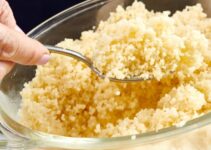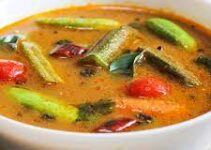Petha overview
Petha is a native of Malaysia, but now, it is widely found throughout the tropics. It’s a climbing herb, and fruits are cylindrical or spherical gourd. The young fruit is used as a vegetable and made into curries, while the ripe fruit is cut into pieces and candied.
Petha or white gourd is beneficial for insanity, epilepsy, nervous diseases, asthma, cough, diabetes, fever, vitiated conditions of Pitta dosha, etc. Its extract is also good in the treatment of peptic ulcer and gastritis.
Different names of Petha
- English: White Gourd, White gourd Melon, Wad Gourd, Tallow Court, Ash Pumpkin, Ash Gourd
- Hindi: Petha, Golkaddu, Kondha, Kudimah, Kumra, Phuthia, Koharat
- Sanskrit: Kushmanda, Kushmandaka,” Kushmandi, Kushpandahaj, .Nagapushpaphala. Pitapushpa, Pushpaphala, Brihatphalaj, Ghrinavasa, Gramyakarkati, Karkaru, Karkotika, Kunjaphala, Shikhivardhaka, Suphala, Timisha, Kumbhanda
- Punjabi: Chalkumra, Golkaddu, Petha, Kaddu
Nutritional facts of Petha
The nutritional value of 100 grams of the fruit is
- Carbohydrate: 3gm
- Protein: 4gm
- Fat: 4 gm
- Calcium: 28 gm
- Phosphorous: 35 mg
- Iron: 0.4mg
- Vitamin A in traces
- Vitamin B2: 62 mg
- Niacin: 0.4mg
- Vitamin C: 4mg
- Sodium:2mg
- Potassium: 211m
Medicinal properties of Petha
The petha fruit is full of medicinal value. It has many therapeutic characteristics and properties. The fruits are sweet, styptic, anabolic, cooling, laxative, diuretic, aphrodisiac, alternative, anti-mercurial, anti-periodic, nutritive, and tonic and are best suited as a wholesome, nutritious vegetable to all, particularly to diabetics and obese. It supplies the food in bulk, has low calories and imparts a cooling effect on the body during summer. The seeds are sweet, cooling, anthelmintic, brain-tonic, anti-pyretic, and anti-syphilitic. The oil extracted from the seeds is soporific, sweet, brain-tonic and liver-tonic
Top10 benefits of Petha
The health benefits of petha have been known since ancient times. It has many pharmacology and therapeutic benefits. Some of its significant benefits and uses are given below:
- Peptic ulcer: The diluted extract of ash gourd is beneficial in the treatment of peptic ulcers. Method: The section, squeezed out from grated ash gourd with an equal amount of water added to it, should be taken daily in the morning on an empty stomach. It is helpful in the treatment of gastritis.
- Hysteria: The fresh juice of the ripe fruit is helpful in hysteria. Method: Take fresh juice of the fruit (7-14ml), Mulaithi (GlycyrrhizaGlabra) -1/2 teaspoonful. Now, mixed and may be taken in the case of hysteria, twice a day.
- Hyperacidity: It is good to reduce the impact of burning sensation in the stomach and body. Method: Take the juice of fruit pulp (10-20 ml) sugar candy (2 teaspoons). Mix and take twice or thrice a day in cases of hyperacidity, burning sensation in the stomach, nervousness, urticaria, itching all over the body, gastric ulcer, and duodenal ulcer.
- Burning urination: If you are suffering from burning urination, it is beneficial to take petha. Method: Take the juice of fruit pulp (4 tablespoons), Potassium carbonate (1 teaspoon), Asafoetida (1 teaspoon), and sugar (5 teaspoons). It is suggested to take it twice a day in case of difficult micturition, burning micturition, renal colic, and inflammation of the male organ.
- Epilepsy and mental disorders: The beneficial impacts of petha have also been seen in epilepsy and mental disorders. Method: Take pure Cow’s Ghee (1 tablespoon), Glycyrrhizaglabra(9 tablespoons), and juice of Petha (9 tablespoons). Mix all together and process it to prepare a Ghritam. This is a very effective medicine for epilepsy.
- Piles: For the treatment of piles, the use of petha shows positive results. Method: Take the pulp of Petha (2 teaspoons), Jaggery(1 teaspoon), Sesame seeds (1 teaspoon), and Terminalia chebula (1/2 tablespoon). Make a paste of jaggery and sesame seeds, then add Terminalia chebula. It can be taken twice a day with milk till the symptoms subside. It can be given in bleeding, especially in bleeding piles. It is also effective in the case of anal fistula and anal fissure.
- General Tonic: Petha is also used as a tonic to strengthen the body system. Method: Take the juice of Petha ( 10 parts), Piper longum (1 piece), dry ginger(1 part), white cumin (1 part), coriander seeds (1 part), cardamom zylanicum (1 part), cinnamon(1 piece), ghee(1part), and sugar (1 part). Mix all together and prepare on a mild heat so that it may look like Jam form. This mixture has multiple benefits: it tones up the weak organs of the body, increases libido, and cures bleeding disorders, itching sensation, thirst, leucorrhoea, bronchitis, asthma, vomiting, heart problems, laryngitis, tuberculosis, etc.
- Syphilis: Since in the medicinal world, it is known as an excellent tonic, the fresh juice of the fruit is applied internally to treat syphilis.
- Tuberculosis: It is one of the best fruits to treat tuberculosis. It is suitable for the liver and controls pitta dosha.
- Urinary bladder: The regular use of petha is helpful to clear the bowl as well as the urinary bladder, and it is also given to people who are suffering from jaundice.
Top 10 uses of Petha
- It is used as an effective antidote for many kinds of vegetable, mercurial and alcoholic poisoning.
- It is used in the treatment of diabetes mellitus.
- It is used in pickles, preserves, condiments, sweetmeats, or confections.
- It has anthelmintic properties and is used in cases of taenia.
- As a vermifuge, it is used against tapeworms and lumbricoids.
- It is used to induce sleep.
- It has blood-clotting properties.
- Due to its diuretic action, it increases urine output and removes wastes from the body.
- The juice is good for those who have an aggressive and violent nature. It helps to cool down these disorders.
- It gives the feeling of calmness and thus acts as a stress buster.





Nice article!
What is good for your hair is good for your skin also.
Dear sir,
You have said, Petha contains 211m of Pottasium. Do you mean 211 mg of Pottasium.
please clarify
thanks
Reader
yes